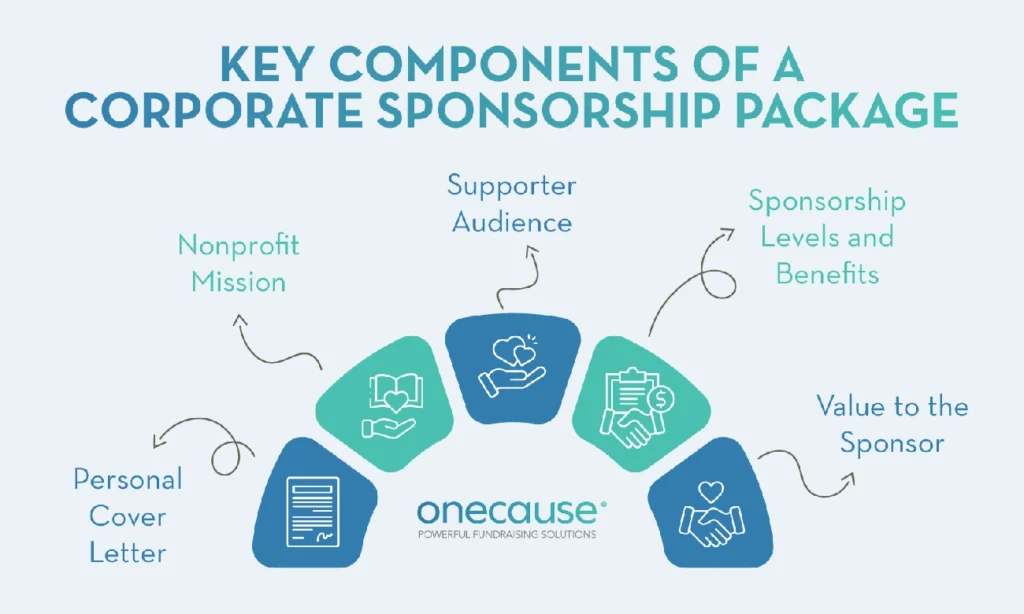The S&P index tells an interesting story. From 2011 to 2019, companies publishing CSR reports jumped from 20% to 90%. This surge shows a clear message – organizations need nonprofit partnerships to create lasting positive change.
Going solo makes it hard for nonprofits to grow their operations. Every organization has its limits, but teaming up with like minded partners multiplies your effectiveness and catches the eye of major funders.
Working together with strategic allies helps you build stronger, broader programs. These partnerships let you share resources and expertise across different sectors. The success of these relationships depends on how well partners connect and work together.
Your nonprofit can do more than just survive – it can flourish. This piece shows you the exact steps to build strong partnerships that boost your mission’s reach and create real change. Let’s reshape your approach to working with others and open new doors for growth.
Step 1: Define Your Partnership Goals
Great nonprofit partnerships start with crystal-clear goals. You might feel ready to jump into collaborations right away, but taking time to set your objectives will create strong relationships that push your mission forward.
Clarify your mission and needs
Your organization’s mission statement should be your first stop before reaching out to partners. This key document spells out why you exist and guides every choice you make. A good mission statement needs to be short, doable, and clear while showing your organization’s values and purpose.
Ask yourself these key questions:
- What challenges does our organization face right now?
- Which resources, skills, or capabilities do we need?
- What should our ideal partner bring?
- What can we give back to our partners?
Note that strong nonprofit partnerships help everyone involved. Your organization should get value while helping others too. The best teams work together by matching each other’s strengths.
Arrange goals with your strategic plan
Your strategic plan and partnership goals need to work together. A nonprofit strategic plan acts as a roadmap that shows where you’re headed—you can’t find your way without it. This plan helps you make better choices when surprises pop up or you need to pick between options.
Look through your strategic plan and spot areas where partnerships could speed up progress. This way, you can talk about real goals instead of maybes when meeting potential partners. Track both quick wins and big-picture results to see how well things work now and later.
Your annual development plan should turn your key priorities into clear goals that show what you need from partners—through major gifts, monthly giving, sponsorships, grants, or other team efforts. Each partnership goal needs to be SMART (Specific, Measurable, Achievable, Relevant, and Time-bound) to keep things on track.
Setting clear partnership goals does many things: it stops mix-ups, makes expectations clear, and helps you check if potential partnerships make sense. This clarity lets you tell possible partners exactly what you need.
Talk about these partnership goals with your leadership team before making them final. Everyone will agree on what you want to do and how far you’ll go to build partnerships. This step keeps your whole team moving in the same direction and stops problems before they start.
Step 2: Identify the Right Type of Nonprofit Partnership

Image Source: OneCause
Knowing different partnership models is vital to your nonprofit’s success. Your defined goals will help you select the type of collaboration that best serves your mission and operational needs. Corporate sponsorships
Corporate sponsorships
Corporate sponsorships stand out as one of the most visible ways nonprofits and businesses work together. These arrangements let businesses support your nonprofit’s mission financially while gaining public recognition. Your organization receives funding, and the business benefits from positive brand association through the “halo effect” of your good work.
The most important thing is to make sure both parties benefit from any corporate sponsorship. The for-profit entity’s benefit shouldn’t outweigh your nonprofit’s gain—this matters greatly for legal and tax compliance. Corporate sponsorships usually take several forms:
- Financial sponsorships: Direct monetary contributions to projects, fundraisers, or operations
- In-kind sponsorships: Donations of products, services, or expertise
- Cause-related marketing: Your nonprofit receives a portion of product sales
- Event sponsorships: Support for specific events like galas or fundraisers
Your organization should be ready before approaching potential sponsors. You’ll need to identify your value proposition, document expectations clearly, and understand both parties’ obligations to avoid tax liability issues.
Nonprofit-to-nonprofit collaborations
Working with other nonprofits helps you pool resources, streamline processes, and expand your reach. These collaborations typically come in three forms:
Joint ventures excel when organizations want to collaborate on specific programs while staying independent. A youth organization might team up with an animal rescue to create a therapeutic riding program for children. This approach expands your services without changing your organization’s structure.
Partnerships use formal agreements with specific goals that can run long-term. Organizations share resources, apply for joint funding, and boost efficiency together. Grant funders often prefer nonprofit partnerships because they deliver more services at lower costs.
Mergers bring two entities together completely. This option makes sense when one organization faces money problems, both serve similar groups, or you need to cut administrative costs.
Support from specialized service providers
Many companies dedicate themselves to helping nonprofits succeed through specialized services. These providers bring expertise that might be out of reach due to your resource limits.
The Nonprofit Alliance’s (TNPA) marketplace directory lists consulting firms, suppliers, and vendors offering nonprofit-specific services. These specialists can help with:
- Fundraising strategy development
- Technology support (website optimization)
- Marketing assistance (email, social media)
- Administrative support (HR, accounting)
- Grant writing expertise
- Legal counsel
- Special events management
Letting specialists handle complex work allows your nonprofit to focus on its core mission while getting professional expertise. This approach often costs less than building these capabilities internally.
Your specific goals, resources, and collaboration needs should guide your partnership choice. The best partnership structure adds to your strengths, helps with weaknesses, and creates lasting value for everyone involved.
Step 3: Find and Evaluate Potential Partners
The right partners for your nonprofit won’t appear magically – you need a smart strategy and good research. Your goals are clear now and you know what kind of partnership you want. The next challenge is to find organizations that line up with your mission and add to your capabilities.
Use landscape analysis and market mapping
Landscape analysis and market mapping are great tools to identify potential partners in a systematic way. These tools help you understand the key players in your field and how they connect with each other.
A successful landscape analysis follows these steps:
- Crystallize your objectives – Your analysis should answer specific questions about potential partners
- Define your scope – Choose which organizations fit based on their function, approach, type, topic, beneficiary, and location
- Gather critical information – Learn key facts about each organization’s strengths, weaknesses, and sector relationships
- Conduct targeted research – Brainstorm with stakeholders, check databases, run surveys, and talk to peers
- Blend findings – Paint a clear picture of the landscape and what it means for your partnership strategy
This analysis shows which needs other organizations already serve well and where gaps exist. The results are a great way to get collaborative opportunities.
Assess alignment in values and mission
- Mission and goals similarity – Similar missions reduce collaboration risks and are the foundations of shared values
- Value integration – Compatible ethical standards and cultural approaches matter
- Long-term vision – Future goals should line up for green partnerships
- Working approaches – Your collaboration styles should complement each other
Mission alignment tools help you compare objectives, scope, and impact areas systematically. This careful assessment prevents partnerships that might weaken your mission focus or create inefficient operations.
Check for complementary strengths
The best partnerships happen when organizations bring different but complementary capabilities to the table. Each partner should contribute unique strengths to make the collaboration work.
Your potential partners should shine in these areas:
- Implementation skills – Excellence in programs that complement yours
- Innovative program design – Fresh approaches to shared challenges
- Community connections – Strong relationships with your target communities
- Resource diversity – Unique resources like passionate volunteers or specialized grants
- Operational capabilities – Technical expertise your organization needs
The goal is to find organizations where “each partner’s distinct assets contribute to the collective impact of the shared cause”. Both organizations should get real value from working together.
Trust comes before any partnership agreement. The Forbes Nonprofit Council puts it well: “without trust, there will not be a successful partnership”. Informal meetings with potential partners help you understand their services, operations, and processes. These meetings build the foundation for successful collaboration.
Step 4: Build the Relationship and Set Expectations
The next crucial step after finding potential partners involves building genuine relationships and setting clear expectations. Many partnerships fail because organizations rush this process, which leads to misunderstandings.
Start with informal conversations
Casual meetings should focus on connection rather than immediate teamwork. These original interactions help you review whether your values line up before making formal commitments. Partnerships thrive when they grow naturally over time some shared relationships need up to two years to fully bloom.
Your relationship-building should come before any partnership pitch. This mirrors the approach used in major gift fundraising, where trust becomes vital before asking for support. Key elements of your first conversations should include:
- Finding common ground and shared goals
- Both organizations sharing their missions and challenges openly
- Making room to ask questions and listen carefully
- Team members from both organizations getting to know each other
Discuss shared goals and responsibilities
Trust and openness are the foundations of successful nonprofit partnerships. You should talk about your organization’s needs, limits, and expectations right from the start. This honesty builds trust and prevents confusion between future partners.
The biggest problem that causes confusion stems from unclear roles and responsibilities. You need to spell out who handles specific tasks, create ways to track progress, and decide how you’ll make decisions. A good framework should cover:
- Who leads and makes decisions
- What each partner brings to the table
- When deliverables are due
- How you’ll solve disagreements
Establish communication channels
Nonprofit partnerships need regular, purposeful communication to succeed. We created regular check-ins to track progress, tackle challenges, and celebrate wins.
Your communication plan should name key contacts, set update schedules, and pick the best ways to stay in touch. This well-laid-out approach keeps everyone informed without wasting time or resources. Stay flexible enough to adapt as your partnership grows—the most successful partnerships often become stronger with time.
Step 5: Formalize the Partnership

Image Source: Dreamstime.com
Trust and agreed expectations need documentation. Written agreements protect everyone involved and turn verbal commitments into solid documentation.
Draft a memorandum of understanding (MOU)
A well-crafted MOU helps avoid misunderstandings and disputes by spelling out what each partner expects. Creating this document is a great way to get insights into partnership building. You’ll quickly see how responsive and serious your potential partner is about working together.
MOUs work as “agreements to agree” that set up a framework while expressing shared goals. These documents should clearly state they don’t create legal obligations that could result in liability. In spite of that, they show your steadfast dedication to work together in good faith.
Define roles, timelines, and deliverables
Your MOU should spell out exactly what each partner must do. Partners need to maintain high quality, professionalism, and expertise throughout the project. The document should also list specific timelines for deliverables.
Here are the foundations of a solid MOU:
- Due diligence and quality control procedures
- Confidentiality rules to protect sensitive information
- Intellectual property rights and usage limits
- Timeline with “time is of the essence” language where needed
- Quality standards and performance expectations
Review legal and tax implications
Everything in nonprofit and for-profit partnerships needs careful evaluation of legal risks. Your tax-exempt status could be at risk if the IRS sees these partnerships as private benefit transactions.
Good intentions don’t prevent tax issues. Nonprofits must watch resources they put into partnerships that generate unrelated business income. Your agreement should state that the tax-exempt organization controls tax-exempt activities.
Legal experts should review your partnership agreement to protect your interests. This becomes vital since the agreement determines who’s responsible if financial losses or property damage occur.
Conclusion
Mutually beneficial nonprofit alliances can help you achieve your mission on a larger scale. This piece shows you how to turn collaboration from an abstract idea into practical steps. A clear definition of your goals creates the foundation for successful partnerships. The right partnership model—whether corporate sponsorships, nonprofit collaborations, or specialized services—helps arrange your strategy with operational needs.
Your partnerships will thrive when you find compatible partners through systematic analysis of the landscape. Good preliminary research directly affects long-term success. Building authentic relationships before formalizing agreements creates trust that helps partnerships overcome inevitable challenges.
Documentation becomes crucial when you turn verbal agreements into clear commitments through MOUs that protect everyone involved. This organized approach helps your nonprofit handle resource limitations while expanding your effect beyond what you could achieve alone.
Creating meaningful collaboration needs time and careful planning. The results—expanded reach, pooled resources, and amplified effect—make mutually beneficial alliances worth the effort. This step-by-step approach helps you build partnerships confidently that boost your nonprofit’s capacity and create lasting change in your communities.

